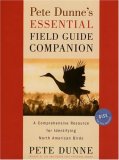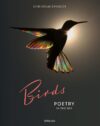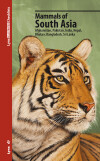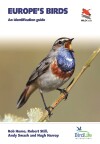 In my review of Pete Dunne’s Essential Field Guide Companion I state that it belongs in the library of every North American birder. I just want to share a quick scenario that illustrates just how essential this guide really is.
In my review of Pete Dunne’s Essential Field Guide Companion I state that it belongs in the library of every North American birder. I just want to share a quick scenario that illustrates just how essential this guide really is.
Suppose you’re in the Lower Rio Grande Valley of Texas in late fall, and you hear of a vagrant Dusky-capped Flycatcher that was found at a nearby refuge. Having never seen one, you decide to head down and try for it. Naturally, you prepare by checking out what the bird looks like in your field guide and listen to its vocalizations on your mp3 player of choice.
When you arrive, you hear a sound that you’ve never heard before – a long, pure, slightly descending whistle. It doesn’t really sound like the recordings of your target, so you spend a little time trying to pish out the hidden bird, but when it doesn’t cooperate, you move on.
A few minutes later you run into another birder who has just heard the flycatcher. You follow them back to the spot you heard that weird sound, and quickly realize that it had been your intended quarry all along. Naturally, it stops calling at this point, so you start looking around trying to find the bird visually. Knowing that its relative, the Great-crested Flycatcher, hawks insects from mid-to-high up in trees, that’s where you look. But of course you see nothing.
At this point, the birder has made two mistakes that could have been prevented by reading the flycatcher’s account in Pete Dunne’s book. First, one couldn’t help but seeing the very first statement in the vocalization section: “Most commonly heard vocalization is a plaintive, smoothly descending, whistled ‘wheeer?'”. That perfectly describes the sound you heard, and certainly would have been nice to know before hearing it.
It would also have been helpful to know where to look for the bird. Pete writes:
Likes to hunt in confines that are tight – places so tight that only a tiny Myiarchus can weave a path – and low – lower than the canopy-haunting Brown-crested Flycatcher. As a rule, does not sit conspicuously high and does not forage above the canopy.
In other words, in the exact opposite place that you were looking.
By now you should have guessed that our hypothetical birder isn’t really hypothetical at all. Yep, it was me. In my defense, I should say that I didn’t have room in my baggage to bring much reference material, so I wasn’t able to read this beforehand. Thankfully, the visitor’s center at the Audubon Sabal Palm Sanctuary, where the bird was found, had a good selection of books for sale. This book was the first I turned to, and it was then that I found out I had been looking in the wrong places.
I have since checked many sources, and Dunne’s book is the only one I’ve found that mentions this bird’s preferred foraging location.
I did not see the dusky-capped on that first attempt, but I was able to return the next morning for another attempt. This time I arrived even earlier, and I knew what I was looking and listening for. When it finally started calling, another birder and I set out to track it down. After a search that seemed like it took much longer than it actually did, we finally laid eyes on our hard-earned lifer.
It was in some low, dense vegetation. Right where Dunne’s guide said it would be.
Posted by Grant McCreary on November 30th, 2008.








[…] McCreary sings the praises of Pete Dunne’s Essential Field Guide Companion in Truly Essential. After reading Grant’s review, I think a lot you may hope that Santa will leave a copy under […]
Wow…thanks for the heads’ up! Sigh, I’m already money poor and book rich…but can a birder HAVE too many good field-guides?
Thanks again!